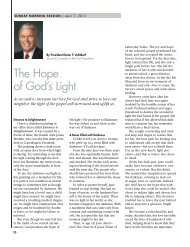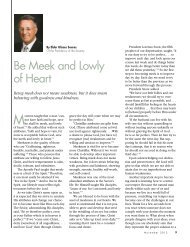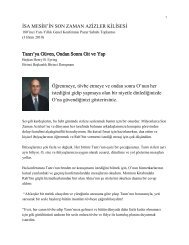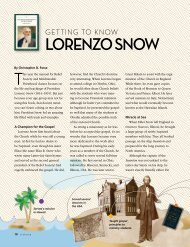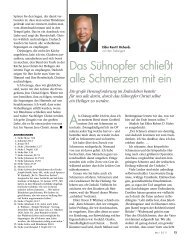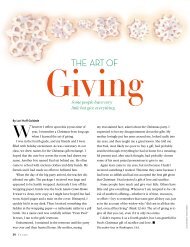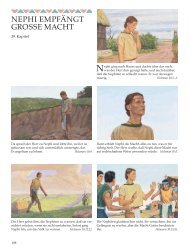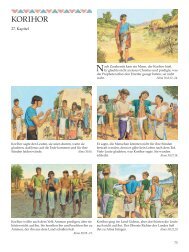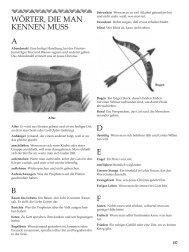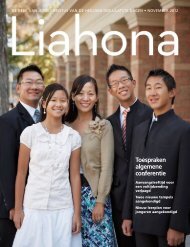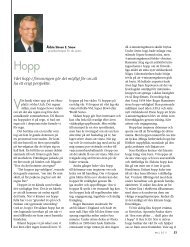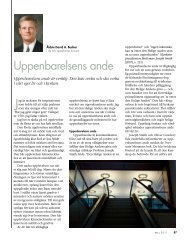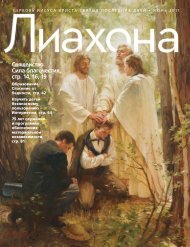February 2012 Ensign - The Church of Jesus Christ of Latter-day ...
February 2012 Ensign - The Church of Jesus Christ of Latter-day ...
February 2012 Ensign - The Church of Jesus Christ of Latter-day ...
You also want an ePaper? Increase the reach of your titles
YUMPU automatically turns print PDFs into web optimized ePapers that Google loves.
LEFT: PHOTOGRAPH BY ROBERT CASEY; RIGHT: PHOTOGRAPH BY ERIN JENSEN<br />
How Do I<br />
Help This Child?<br />
By Danyelle Ferguson<br />
Do you work with Primary<br />
children who have cognitive<br />
disabilities? Here are some<br />
ideas for teaching them.<br />
Many Primary teachers and<br />
leaders have questions<br />
about how to serve a<br />
child with cognitive disabilities,<br />
such as autism, Down syndrome,<br />
or attention deficit/hyperactivity<br />
disorder (ADHD). <strong>The</strong>y might ask:<br />
How can I teach this child? Should<br />
she be in the same classroom with<br />
others her age? Can he participate<br />
in sharing time or activities?<br />
As the mother <strong>of</strong> a son with<br />
autism and as a Primary teacher<br />
<strong>of</strong> children with cognitive disabilities,<br />
I’ve learned a lot about meeting the needs <strong>of</strong> these<br />
children. <strong>The</strong> following principles are just some <strong>of</strong> what<br />
I’ve learned. Hopefully, they will be helpful to you as you<br />
reach out to serve and include all children in your ward or<br />
branch Primary.<br />
Serve as <strong>Jesus</strong> Did<br />
Our Savior showed us how to serve others by tailoring<br />
His message and actions to fit individual needs. 1 For<br />
instance, when He visited the Nephites, He gathered their<br />
little children to Him and “took [them], one by one, and<br />
blessed them, and prayed unto the Father for them” (3 Nephi<br />
Author Danyelle Ferguson with<br />
her son Isaac, who has autism.<br />
17:21; emphasis added). Angels<br />
then “encircled those little ones”<br />
with heavenly fire and “did minister<br />
unto them” (3 Nephi 17:24).<br />
We share in the Lord’s ministry<br />
as we teach all children. Elder<br />
M. Russell Ballard <strong>of</strong> the Quorum<br />
<strong>of</strong> the Twelve Apostles reminds<br />
us: “Those <strong>of</strong> us who have been<br />
entrusted with precious children<br />
have been given a sacred, noble<br />
stewardship, for we are the ones<br />
God has appointed to encircle<br />
to<strong>day</strong>’s children with love and the<br />
fire <strong>of</strong> faith and an understanding<br />
<strong>of</strong> who they are.” 2 As we fulfill our<br />
responsibility to help children with<br />
disabilities, the Lord will help us<br />
individualize our service and teaching<br />
to meet their needs.<br />
To better understand these needs, Primary teachers and<br />
leaders could meet with the child and his parents, which is a<br />
good time for the teacher to begin befriending the child. Often<br />
the best place to get acquainted is in his home, where he is<br />
comfortable and more likely to connect with new people.<br />
Become Educated and Work Together<br />
Teachers and leaders should take time to learn about<br />
the child’s disability. A great place to start is the <strong>Church</strong><br />
website lds .org/disability (available in several languages),<br />
where they can read overviews about specific disabilities,<br />
learn teaching tips, and find additional resources.<br />
<strong>February</strong> <strong>2012</strong> 57



